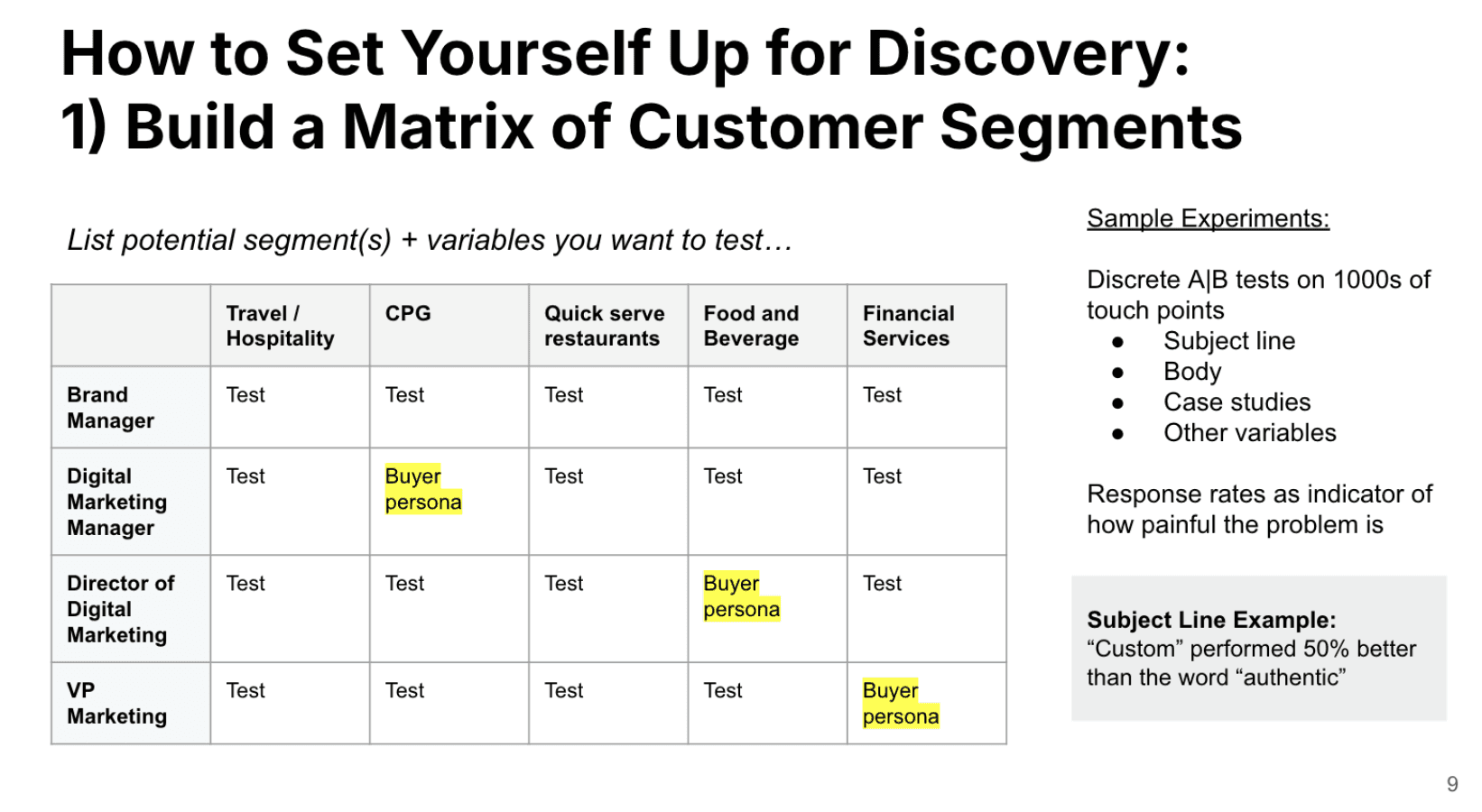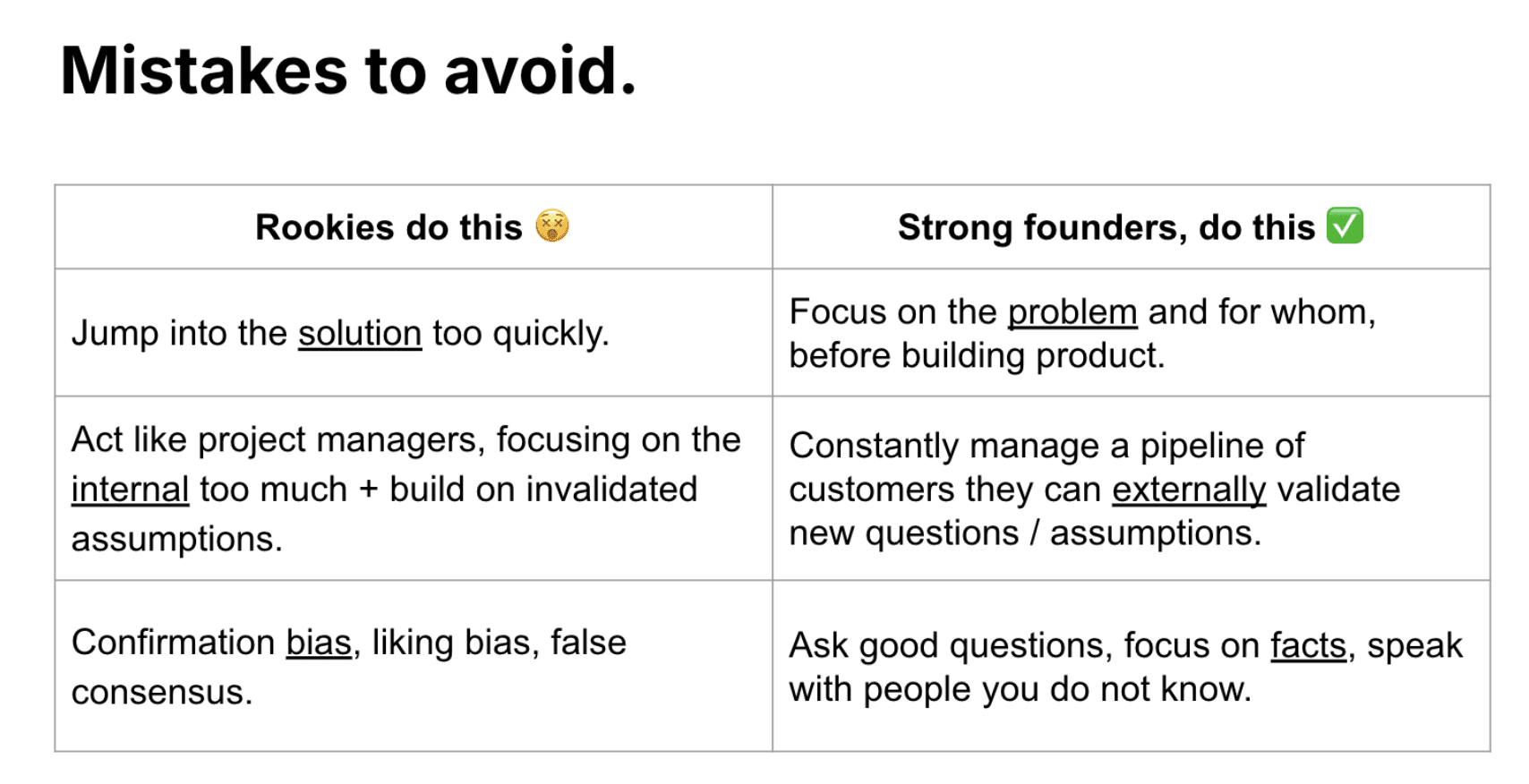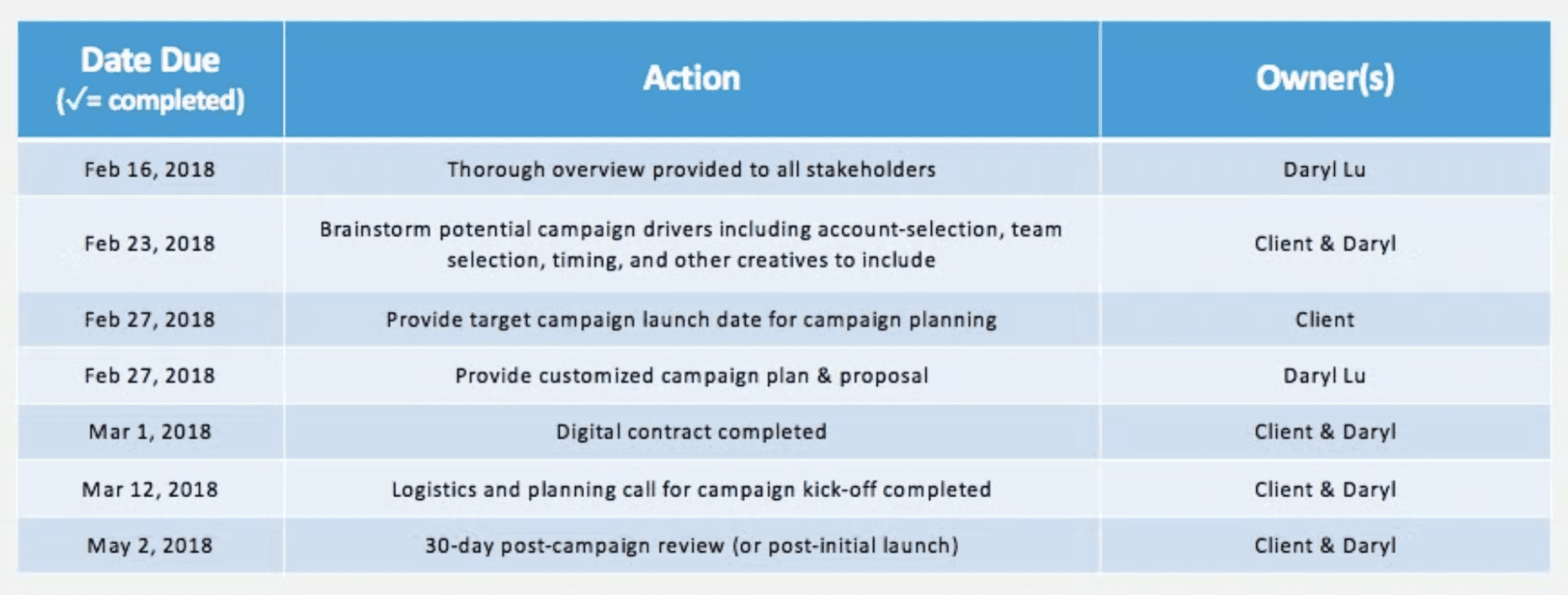Pragmatic Venture Blueprint
Card 9 of 18
Discovery-led sales
Category
Demand Validation (2-6)
Author
Jeremy Vo
How do I know when I am ready to transition to sales?
Short answer is that you’ve done rounds of discovery that have brought you to understanding a particular customer segment and you’ve clearly identified a pain point as well as urgency to solve that pain.
Often times in our work, it takes us many rounds of discovery to find an ideal customer segment. In one case it took us 6 months, but we were able to find several pockets of strong customer segments from that exercise.
Having a high level understanding of which tests and experiments you will run (and what hypothesis you want to test) will help guide you through this process. We recommend you build a matrix of industries, segments, titles, that you will want to go out into the market and learn from. This helps you stay organized.


How do I move towards closing my first customer?
Getting a signed LOI is a fantastic signal that this venture is worth building and that you’ve de-risked it by getting a customer to co-build with you. Maintain clear communication, map organizational decisions, and develop a mutual plan to create urgency. Use LOI templates and strategic sales tactics to move the process toward a contract.
Tactics:
Maintaining communication, org decision mapping
Mutual plan on next steps and a plan for the future vision
Creating urgency
Getting buy-in from both User and Buyer level
When navigating the organization, ensuring you have understood the customer at both the user and buyer levels is incredibly important.
There have been so many scenarios where we have gotten a buyer to buy-in but a user ended up vetoing the deal because they did not want to deal with implementation and their personal problems would not be addressed —> spend enough time with both personas to get the full picture.
When first introducing the concept of the LOI, it is wise to individually run it by both a user and a buyer, then to combine their thoughts together so that there is cohesion amongst all parties. just because they are part of the same org does not mean they have the same priorities.
TIP: for any learnings that you gain from a User, use that as a way to “check in” with a Buyer on sharing that tidbit of knowledge (and vice versa). you then become a trusted source because you are making sure everyone is on the same page.
Using a Mutual Plan
A mutual plan is a tactic used in b2b sales to keep the sales cycle organized.
Often, you will see this presented at the end of a deck where you have proposed tasks/responsibilities/action items + the owner associated + timeline/date due.
The idea is to get the prospect to “buy into the plan” and then once it is agreed that you will both follow the plan and commit to it (such as the evaluation process), you can agree on the items inside of the plan.
Below is a sample that might be put at the end of a deck.
TIP: we often like to also create a chart that you can directly insert into the follow-up email; this way, there is no excuse to not see it.

Considerations
Having a well structured engagement model or plan is generally highly correlated to the success of getting an LOI. With clear dates, timelines, deliverables, expectations, and requirements from both parties all laid out, it shows that you have really given the engagement and co-build partnership a lot of thought. Of course, there may be changes along the way, but having thought through all of the components of the plan helps to de-risk the time and effort that the client will be putting forth. They want to make sure they are not wasting their time.
Treat an LOI as if they are your first paying customer (which ultimately is the future outcome). Roll out the red carpet, be hands on, and err on over-communication rather than under-communication. Further, if you can structure in a trigger payment contingent on a product/value milestone that you deliver, that is the most ideal scenario for a successful LOI.
Most customers do not know how to buy. You should be teaching them about “how to buy tools” throughout the process (i.e. this is how most people structure LOIs, this is what tends to happen during a pilot, this is how requirements are gathered, etc.). Leading and guiding the client will show your aptitude and help you gain their trust that you know what you are doing.
Corporates are often hesitant to sign paperwork of any kind, even if it is non-binding and non-financially obligating. Knowing that should help you prepare for scenarios of disappointment.
Additional resources

